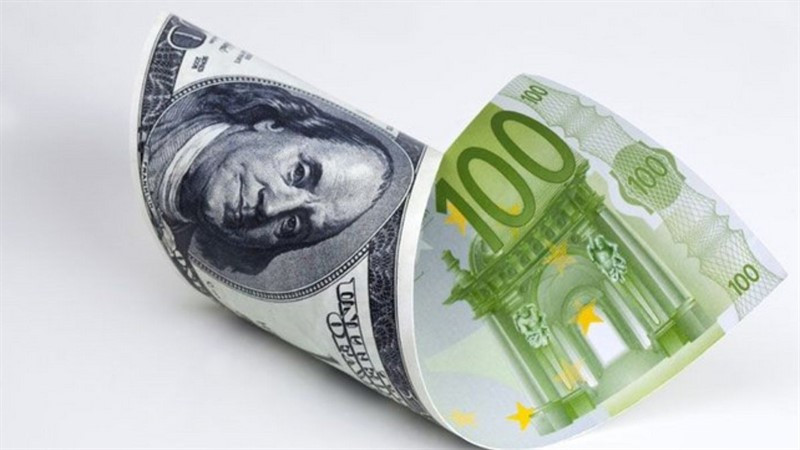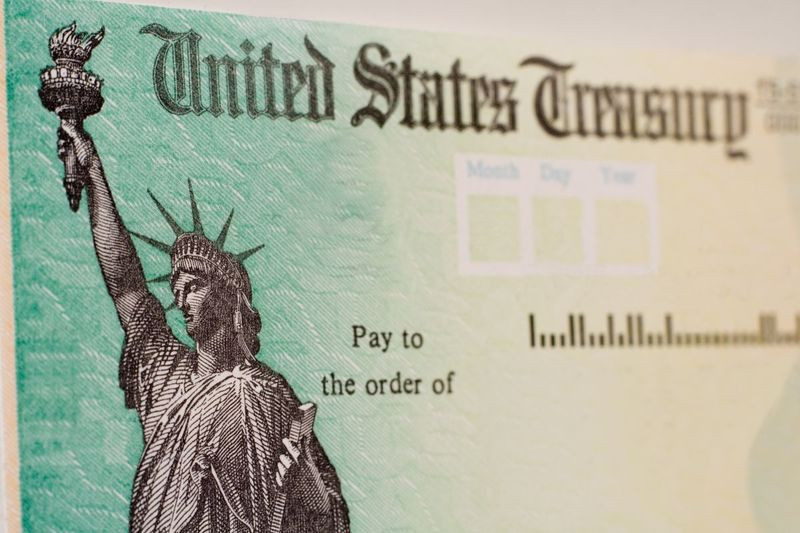

Since the beginning of the month, the US currency has risen in price against its competitors by 2.6%, while the EUR/USD pair has sunk by almost 300 points.
The main factor in the strengthening of the USD was expectations regarding the increase in the Federal Reserve's key rate in May by two minimum steps at once.
The futures market puts in quotes a 96% probability of raising the federal funds rate by 50 basis points at the FOMC meeting next month and a cumulative rate increase in 2022 by about 215 basis points.
History shows that when the Fed goes into monetary tightening mode, including raising interest rates, the dollar eventually weakens during these cycles. However, at the moment there are not so many reasons that can force the US currency to turn off the path of strengthening.
"The dynamics of the dollar reflects the economic superiority of the United States, while other economies – primarily European – are already suffering from high energy prices caused by the Russian-Ukrainian conflict," Commonwealth Bank of Australia analysts noted.
They added that they will monitor the data on business activity, which many countries will publish this Friday.
"If we get weak PMI figures in the eurozone or elsewhere, then the markets could potentially lower their expectations for the global economy. We do not think that the purchasing managers' indices in the US will be much worse than expected, so we will see some contrast, which is likely to support the dollar," the CBA said.
According to experts, the main driving force for the greenback is an increase in the yield of US Treasury bonds.
After a three-day weekend, the yield of 10-year treasuries continued to grow on Monday. The day before, the indicator jumped above 2.88%, reaching the highest levels since December 2018. Since the beginning of April alone, the yield on government bonds has increased by more than half a percentage point.
In conditions of low trading activity associated with the celebration of Easter in the Catholic world, the greenback changed hands. Reflecting the cautious market sentiment, the key Wall Street indexes fluctuated between a slight rise and a fall during the day.
This sluggish trading contributed to the fact that the session was turned upside down.
The dollar was still able to gain momentum against the background of the renewed growth in the yield of US government bonds. The USD index jumped to 100.86, reaching its highest level since April 2020.

As you know, the growth of UST profitability harms risky assets. Therefore, it is not surprising that the main US indices ended yesterday's trading in the red, losing an average of about 0.1%.
Investors are still afraid of rising inflation and the possible consequences for the American economy. In addition, they monitor the measures taken by the Fed to curb the growth of consumer prices.
"The market is looking for some direction. The main factor is still what the Fed looks like in the future in terms of interest rates and inflation," Natixis strategists said.
On Monday, the president of the St. Louis Fed, James Bullard, said that inflation in the United States has gone too far, but the US central bank has a plan to curb it.
He does not rule out the possibility of raising the Fed's base interest rate by 75 basis points at once, although he does not believe that this will be required.
"Raising the key rate by more than 50 bps is not included in my main scenario. I don't rule it out, but it's not in my main scenario," said Bullard. He noted that in the past, the Fed has raised the rate at a faster pace.
Bullard believes that the central bank should raise the rate to 3.5% by the end of this year in order to control inflation, and this will require several rate increases of 50 bp.
However, whether the US economy will be able to maintain momentum in the face of multiple increases in the key rate is a big question.
The head of the Federal Reserve Bank of Cleveland, Loretta Mester, hopes that the central bank will be able to control inflation, while maintaining the growth of economic activity and maintaining the health of the labor market.
Fed Vice Chairman Lael Brainard also remains optimistic.
"The US economy is entering a period of heightened uncertainty, with a very strong labor market and significant economic momentum. And this, I think, is a good prerequisite for reducing inflation while simultaneously maintaining the economic recovery," she said.
Meanwhile, Goldman Sachs analysts believe otherwise. They say it won't be easy for the U.S. economy to make a "soft landing."
"The Federal Reserve needs to tighten financial conditions sufficiently to reduce the number of new vacancies without provoking a sharp increase in unemployment. It will probably be difficult to achieve a "soft landing" of the US economy, since historically the rapid reduction of the discrepancy between the number of jobs and employment was accompanied by a recession," Goldman Sachs noted.
According to the bank's estimates, the probability of a recession in the United States in the next two years is 35%.
Larry Summers, who previously headed the US Treasury Department, continues to insist that the Fed's attempt to ensure a "soft landing" of the economy is illusory.
"I think that the chances of a "hard landing" over the next two years certainly exceed 50% and, quite possibly, are two to three or even more. Whatever the impact of high interest rates on inflation, in the end we are waiting for a pretty "hard landing"," he said.
Judging by the dynamics of the USD, the market is still ignoring talk about the threat of recession in the United States. US dollar bulls became more active after another batch of hawkish comments by Bullard. The head of the St. Louis Federal Reserve stressed that Europe will suffer more from the Ukrainian conflict than America, which is not in danger of a recession.
The dollar has maintained a good momentum after the Easter holidays, according to ING economists, who expect the USD index to rise above the level of 101.00.
"We expect that the greenback will receive support, especially against low-yielding currencies, this week. The divergence in exchange rates between the Fed and the ECB still indicates in favor of strengthening the US currency," they said.
European Central Bank President Christine Lagarde and Fed Chairman Jerome Powell will deliver speeches on Thursday.
In one of his recent speeches, the Fed chairman said that the central bank should be agile and dexterous.
Most likely, Powell will give a signal about the upcoming rate hike by 50 bps, since the central bank likes to announce policy in advance, restraining the markets.
We will also hear from Lagarde this week, but ING analysts doubt that she will make any significant U-turn in political rhetoric.
Investors are still perplexed by the ECB's decision last week. The central bank refused to specify when it intends to start curtailing monetary stimulus, although inflation in the eurozone, according to the latest data, reached 7.5%.
Otmar Issing, former ECB chief economist and one of the creators of the euro, criticized the central bank's decision, saying that it lives in a fantasy world, ignoring the onslaught of inflation.
"Inflation was a sleeping dragon, and now this dragon has woken up," said Issing.
The gap between the policy course of the Fed and the ECB, which is the main factor determining the movement of EUR/ USD, will remain, according to ING strategists.
"In addition, the second round of the French elections, which will be held on April 24, is approaching. Recent opinion polls suggest a relatively safe advantage for President Emmanuel Macron over rival Marine Le Pen, but we suspect that interest in the euro will remain low ahead of this weekend's vote," they said.
There is also growing concern about the events in Ukraine. The day before, Kiev announced that Moscow had launched a new active phase of the offensive in the east of the country.
The combination of these factors continues to oppose the recovery of the euro, and the EUR/USD pair may test 1.0700 in the coming days, ING predicts.
On Tuesday, the USD index updated two-year highs, surpassing the 101.00 mark, before retreating somewhat.
If the 101.00 barrier is confidently overcome in the near future, then the next important resistance is expected only at the peak level of 2020, recorded in March 2020 near 102.99.
It should be noted that the steady growth of USD above the area of 103.00-104.00 has not been observed over the past 20 years.
The dollar rally stopped whenever the Fed softened its policy or tone of comments, taking into account the stock market crash. However, now the central bank is determined and firmly intends to fight inflation. A series of consecutive Fed rate hikes by half a point is just needed to create a margin of safety in the event of a stock market crash.
There is reason to believe that the USD growth is unlikely to stop near 103.00-104.00, as it was earlier.
Consumer interest in the dollar is not weakening, not so much due to increased geopolitical tensions, as due to the switching of the US central bank to monetary tightening mode.
We have already seen something similar in 2014, when the greenback strengthened by about 25%.
That is, the dollar is far from having exhausted its growth potential, and may well rise to 110.00-112.00 in the next few months.
Such a scenario promises the EUR/USD pair a drawdown to parity or even lower.
The main currency pair has been falling for 11 of the last 14 sessions, losing more than 3.5%. Two fundamental drivers led to the weakening of the euro – the difference in interest rates between the eurozone and the United States and the ongoing Russian-Ukrainian conflict.
It is worth recalling that from July 2014 to March 2015, that is, in nine months, the EUR/USD pair sank by almost 22% due to the same drivers after Russia annexed Crimea, while the US central bank at that time adhered to a more hawkish approach than its European colleague. The divergence in the monetary policy of the Fed and the ECB then, as now, played in favor of the dollar against the euro.
The EUR/USD pair closed in negative territory on Monday, around 1.0780, down 0.24%.
Another run of dollar bulls on Tuesday led to the fact that the main currency pair sank to $1.0762, stopping only a few steps from last week's two-year low of $1.0756. Then the EUR/USD pair showed a modest rebound to 1.0800.
To continue the recovery, the pair needs to overcome the resistance at 1.0830. The next barrier appears in the area of 1.0850-1.0860, supported by the 50-day moving average. A breakthrough in this area will allow the pair to head towards 1.0900.
On the other hand, the initial support is at 1.0760. If this level turns into resistance, the 1.0730 and 1.0700 marks will be the next targets for the bears.